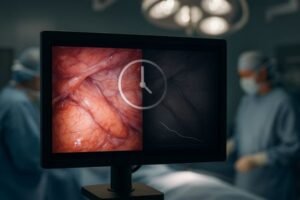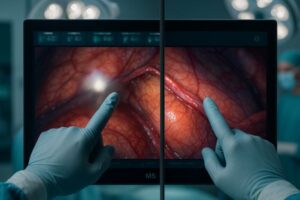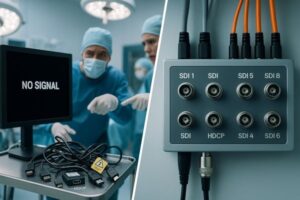Standard displays miss critical details hidden in the brightest and darkest areas of an image. This limitation can compromise diagnostic certainty. High Dynamic Range (HDR) technology reveals the full spectrum of visual information.
This article examines High Dynamic Range (HDR) in medical displays, covering its impact on luminance range, contrast, and tone mapping. I will discuss its application in various modalities, the importance of color accuracy and calibration, and how Reshin implements HDR technology in advanced monitors.

Standard Dynamic Range (SDR)1 displays, which have been the norm for decades, possess a limited capacity to represent luminance and contrast. This means they cannot simultaneously show fine details in very dark and very bright parts of an image. In medical imaging, this can lead to "clipping," where bright areas are washed out to pure white, or "crushing," where shadowed regions collapse into pure black. High Dynamic Range (HDR)2 technology directly addresses this shortcoming. It significantly expands the display’s luminance range, allowing it to produce brighter highlights, deeper blacks, and a vastly wider spectrum of tones in between. This capability is not just a visual enhancement; it is a clinical necessity. In surgical video, for example, HDR helps a surgeon see detail inside a shadowed anatomical cavity while simultaneously viewing brightly lit surrounding tissue. For a flagship surgical monitor like the MS275P, HDR integration means providing surgeons with unparalleled spatial awareness and visual data, translating directly to improved precision and safety.
HDR expands luminance range for improved diagnostic visibility
Dim displays can obscure pathology hiding in shadows. SDR screens cannot replicate the full range of light captured by modern imaging systems. HDR delivers the brightness needed to illuminate every detail.
HDR technology dramatically increases a display’s peak brightness and black levels. This expanded luminance range allows clinicians to see into both deep shadows and bright, specular highlights simultaneously, revealing details that SDR displays would otherwise miss.
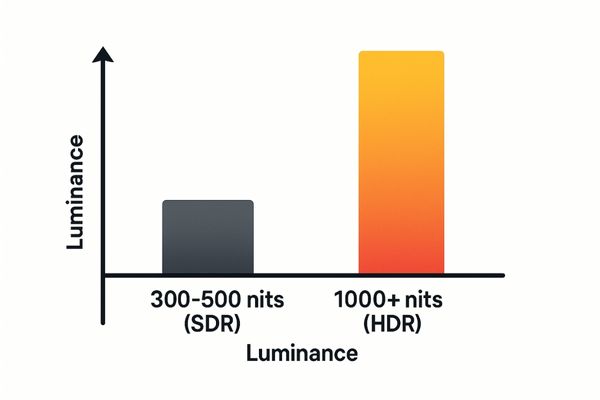
The most fundamental advantage of HDR is the expansion of the dynamic range3, which is the difference between the darkest black and the brightest white a display can produce. Standard medical displays might operate within a luminance range of 300 to 500 nits (candelas per square meter). An HDR-capable display can achieve peak brightness levels well over 1,000 nits while also producing deeper, more detailed blacks. This expanded canvas is crucial for interpreting medical images that contain a wide gamut of luminance values. Consider a chest X-ray: an SDR display might struggle to show both the subtle texture of the lung tissue and the dense structure of the mediastinum in the same view without compromising one or the other. An HDR monitor4, such as the MD120C, can render both with high fidelity. This means a radiologist can scrutinize faint nodules in the lungs without losing detail in the brighter regions around the spine and ribs. This expanded range more closely mimics the natural perception of the human eye and, more importantly, the full range of data captured by the imaging device.
Enhanced contrast reveals subtle differences in tissue structures
Low contrast can make adjacent tissues blend together. This lack of separation can mask the fine borders of a tumor or lesion. HDR provides the contrast needed for clear differentiation.
HDR’s ability to create deeper blacks and brighter highlights results in a significantly higher contrast ratio. This enhanced contrast makes it easier to distinguish between adjacent tissues of similar density, revealing subtle anatomical borders and textures.
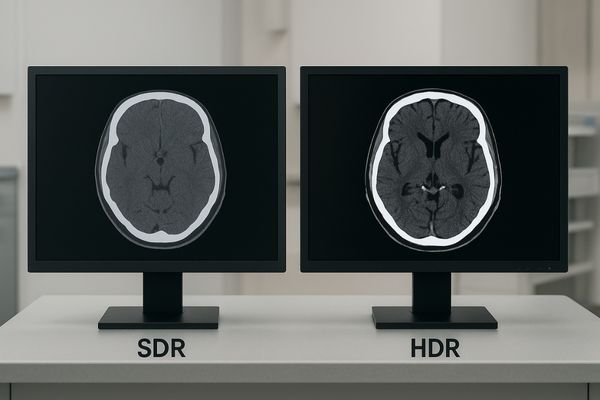
Beyond just making the image brighter, HDR fundamentally improves contrast5, which is the key to differentiating structures. Contrast is not merely about the global difference between the dimmest and brightest points but also about local contrast—the difference between adjacent pixels. With a vastly expanded luminance range, an HDR display can assign more distinct luminance values to subtle variations in the image data. This allows it to clearly delineate the fine-edged border of a small lesion from the surrounding healthy tissue, a task that might be difficult on an SDR display where both tissues might be mapped to very similar gray levels. For modalities like MRI, where soft tissue contrast is paramount, this capability is invaluable. For a high-performance specialty display like the MD50C, the enhanced contrast provided by HDR6 allows for more confident assessment of microcalcifications and tissue masses in mammography. This improvement in perceptual separation reduces ambiguity and helps guide a more accurate diagnosis by making subtle features more conspicuous.
Accurate tone mapping preserves detail in bright and dark regions
Simply making a display brighter is not enough. Without intelligent processing, detail can still be lost. Proper tone mapping ensures that the entire range of image data is visible.
Tone mapping is the process of translating the wide dynamic range of source content to the specific capabilities of the display. Accurate HDR tone mapping preserves detail across the entire luminance spectrum, preventing clipping in highlights and crushing in shadows.
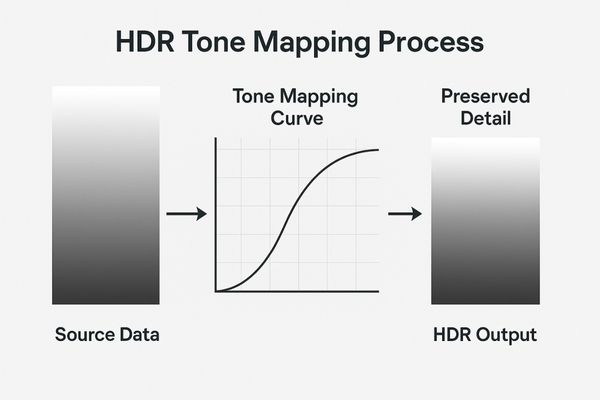
A medical imaging dataset often contains more dynamic range than any display can reproduce. Tone mapping is the crucial algorithm that intelligently compresses this source data to fit the display’s capabilities while preserving as much visual information as possible. Poor tone mapping can negate the benefits of an HDR panel, creating a bright but flat image. An effective tone mapping7 curve, like the Perceptual Quantizer8 (PQ) or Hybrid-Log Gamma (HLG) standards, ensures that details are maintained across all brightness levels. It carefully allocates the display’s luminance budget, making sure that subtle textures in dark, shadowed areas remain visible and that details within bright objects, like the sheen on a surgical instrument or the detail within a bone, are not bleached out. A surgical monitor such as the MS321PC must employ sophisticated, real-time tone mapping to handle the unpredictable lighting conditions of live video. This ensures surgeons see a clear, detailed, and artifact-free image, allowing them to make critical decisions with complete visual information. It is the intelligence behind the brightness.
HDR Standards and Their Medical Application
| HDR Standard | Key Characteristic | Typical Medical Use Case | Why It’s Suitable |
|---|---|---|---|
| HLG (Hybrid-Log Gamma) | Backwards-compatible with SDR displays. | Live surgical broadcast, endoscopy. | Easy to implement in broadcast workflows without separate signals for SDR/HDR. |
| PQ (Perceptual Quantizer) | Optimized for human visual perception. | Diagnostic radiology, pre-recorded surgical video. | Provides highly accurate, absolute luminance for critical image review. |
| HDR10 | Open standard using PQ. | General medical imaging review. | Wide industry support, good baseline for HDR performance. |
HDR supports complex imaging modalities like surgical video and radiology
Different medical fields have unique imaging needs. Surgical video requires real-time clarity, while radiology demands subtle detail. HDR technology is versatile enough to benefit both disciplines.
From the deep blacks and bright reflections in real-time endoscopic video to the subtle grayscale gradations in a CT scan, HDR enhances visibility and detail across a wide array of demanding medical imaging applications.
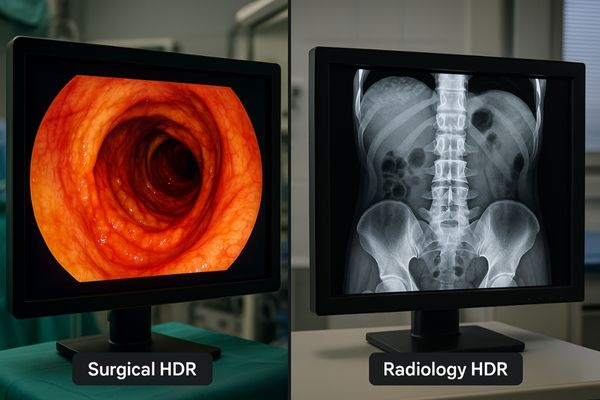
The benefits of HDR are not confined to a single specialty; its versatility enhances performance across diverse medical modalities. In the operating room, surgical endoscopy and microscopy generate images with extreme dynamic range. Bright, specular reflections from wet tissue can coexist with deep, dark cavities. An HDR monitor9 like the MS550P allows surgeons to see into these shadowed areas without being blinded by the highlights, improving procedural safety and efficiency. In radiology, HDR is equally impactful. When viewing a PET-CT fusion image10, a radiologist needs to see both the low-luminance anatomical detail from the CT and the bright, color-coded metabolic activity from the PET scan. HDR allows for a clear representation of both datasets simultaneously on a single screen, improving workflow and diagnostic accuracy. By providing a more faithful representation of the source data, HDR offers tangible benefits for any modality that captures a wide range of luminance and color information.
Color accuracy in HDR is critical for reliable medical interpretation
Bright, vibrant color is useless if it is not accurate. In medicine, color often carries specific meaning. An incorrect shade can lead to misinterpretation of vital clinical information.
HDR is not just about brightness; it also involves a wider color gamut. It is essential that these expanded colors are rendered with high accuracy to ensure that tissue perfusion, oxygenation, or contrast agents are displayed correctly.
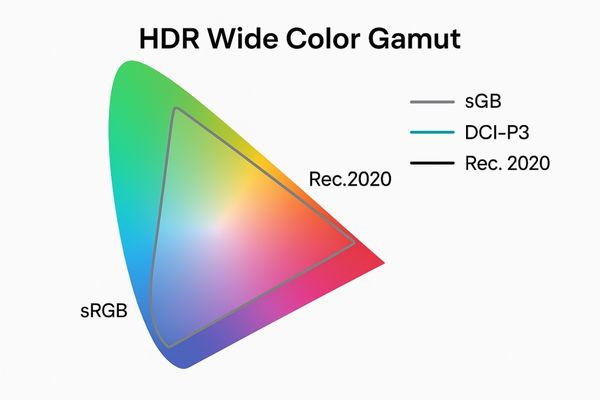
While luminance is a key component of HDR, the technology is intrinsically linked to Wide Color Gamut (WCG)11. HDR standards like Rec.2020 encompass a much larger range of colors than the traditional sRGB standard used by SDR displays. This allows for the display of more saturated and nuanced colors, which is critical in many medical applications. For example, in endoscopic surgery, the subtle shades of red can indicate tissue health and perfusion. In digital pathology, specific stains are used to highlight cancerous cells with distinct colors. If the display cannot render these colors accurately, a clinician could misinterpret the image. A monitor like the MS430PC must therefore not only support a wide color gamut but also be calibrated to ensure that every color is rendered precisely as defined in the source data. The combination of high brightness12 and accurate, expanded color provides a more realistic and information-rich view, which is essential for procedures that rely on color differentiation for critical decision-making.
Hardware calibration ensures consistent HDR performance over time
A display’s performance can drift as it ages. The screen that was perfect out of the box may become inaccurate months later. Regular calibration is the only way to ensure lasting quality.
All displays degrade over time, affecting their brightness, contrast, and color. Hardware calibration directly measures and corrects the display’s output, ensuring it consistently adheres to HDR and medical standards (like DICOM) throughout its operational life.
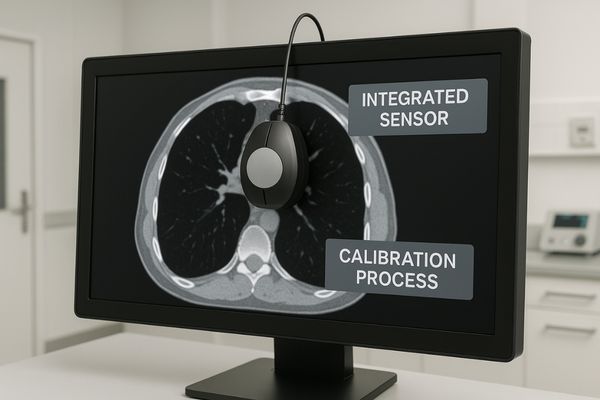
An HDR monitor is a precision instrument, and like any such instrument, it requires periodic calibration to maintain its accuracy. The performance of the backlight and the liquid crystal panel can change over time due to aging, leading to shifts in luminance and color. Software-only calibration can make adjustments to the video signal, but it cannot correct for the physical degradation of the panel itself, often resulting in a loss of tonal information. Hardware calibration uses an external colorimeter or photometer to physically measure the light and color being produced by the screen. This data is then used to create a corrective profile in the monitor’s internal lookup table (LUT), adjusting its output to perfectly match a desired standard, such as DICOM Part 1413 or the PQ curve. A diagnostic monitor like the MD85CA, equipped with an integrated front sensor and calibration software, can automate this process. This ensures that its HDR performance remains consistent and reliable for years, providing the reproducible image quality that is essential for longitudinal studies and confident diagnoses.
Reshin integrates HDR in high-end surgical and diagnostic monitors
Adopting new technology requires commitment. We see HDR not as a feature, but as a core component of modern medical imaging. Our high-end displays are built around this powerful technology.
Our HDR-enabled displays are engineered with high-brightness backlights, high-contrast panels, and advanced color processing. This integrated approach ensures we deliver the full clinical benefits of HDR, from surgical precision to diagnostic confidence, meeting strict medical standards.
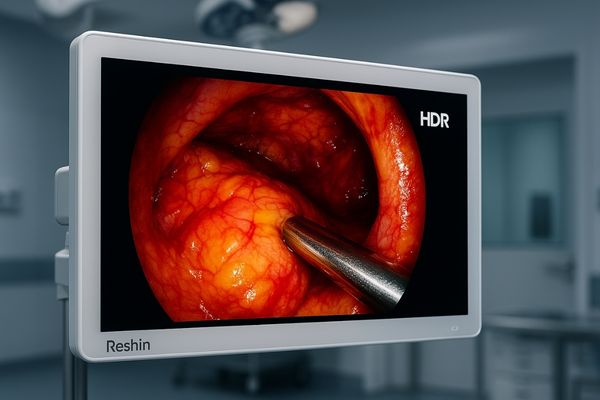
Our commitment to advancing medical display technology is reflected in our robust integration of HDR across our high-end product lines. We understand that achieving true medical-grade HDR performance14 is more than just using an HDR-capable panel. It requires a holistic design approach. This begins with a powerful, specialized backlight system capable of delivering high peak brightness while maintaining precise control for deep black levels. We couple this with advanced signal processing15 and 3D lookup tables (LUTs) to manage wide color gamuts and perform accurate tone mapping in real time. This ensures that our monitors, such as the surgical MS321PB, deliver not just a brighter image, but a more detailed, accurate, and visually informative one. By combining high peak luminance, exceptional contrast, and precise color mapping, we provide clinicians with a tool that faithfully represents the full dynamic range of modern medical imaging, ultimately enhancing their ability to diagnose and treat patients effectively.
Conclusion
High Dynamic Range is an essential technology for modern medical displays, providing the expanded luminance and contrast necessary to improve diagnostic visibility and clinical decision-making.
📩 Want to integrate HDR-enabled displays into your clinical workflow? Contact Martin at martin@reshinmonitors.com to explore Reshin’s advanced solutions.
-
Learn about the constraints of SDR displays and why HDR is essential for modern imaging needs. ↩
-
Explore how HDR technology enhances medical imaging, improving detail visibility and surgical precision. ↩
-
Understanding dynamic range is essential for appreciating how HDR enhances image quality, especially in medical imaging. ↩
-
Exploring the advantages of HDR monitors can reveal how they improve diagnostic accuracy and image clarity in medical settings. ↩
-
This resource will provide insights into the critical role of contrast in improving diagnostic accuracy in medical imaging. ↩
-
Exploring this link will deepen your understanding of HDR’s advantages in enhancing image quality and contrast. ↩
-
Understanding tone mapping is essential for optimizing image quality in medical displays, ensuring critical details are visible. ↩
-
Exploring the Perceptual Quantizer can enhance your knowledge of HDR imaging techniques, crucial for high-quality medical visuals. ↩
-
Explore how HDR monitors enhance image clarity and safety in medical procedures, making them essential for modern healthcare. ↩
-
Learn about the benefits of PET-CT fusion imaging in diagnostics, including enhanced visualization of anatomical and metabolic data. ↩
-
Understanding WCG is crucial for appreciating how HDR enhances color accuracy, especially in medical imaging. ↩
-
Exploring the impact of high brightness on display quality can reveal its significance in critical medical procedures. ↩
-
Exploring DICOM Part 14 will enhance your knowledge of medical imaging standards, ensuring compliance and quality in diagnostic practices. ↩
-
Understanding medical-grade HDR performance is crucial for ensuring accurate imaging in healthcare, enhancing diagnosis and treatment. ↩
-
Exploring advanced signal processing reveals how it enhances image quality and accuracy, vital for effective medical imaging. ↩

